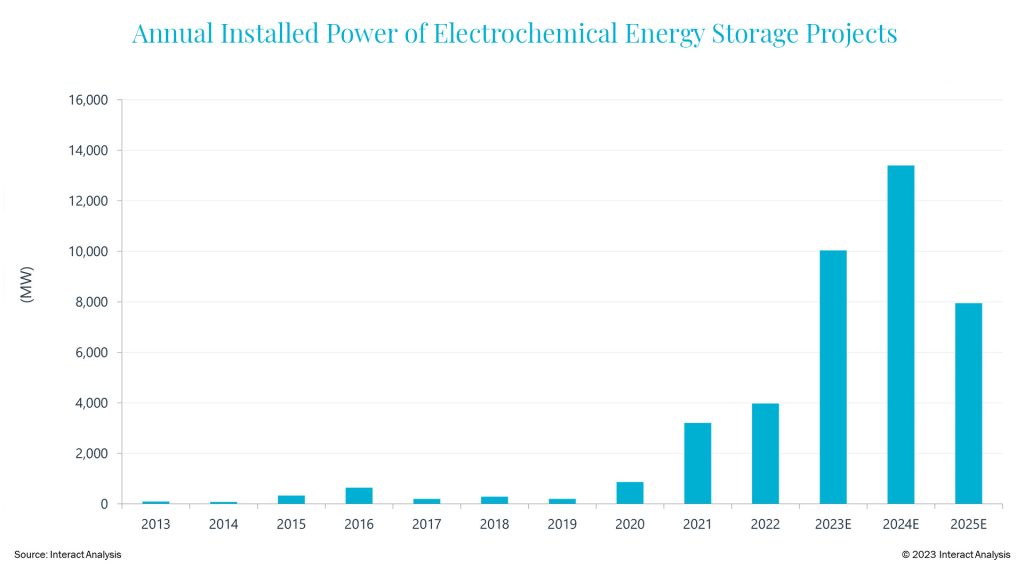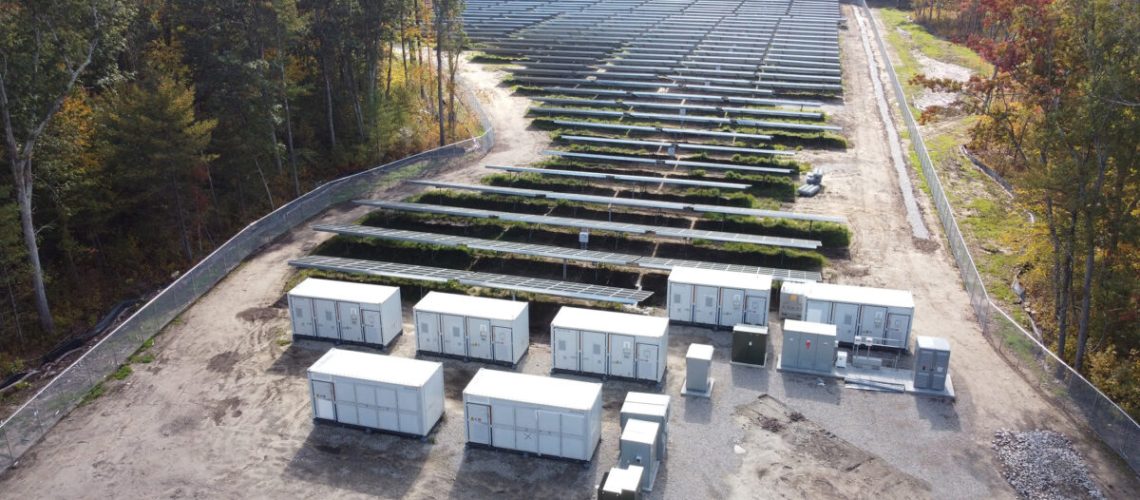A report from Interact Analysis demonstrates the growth of energy storage as it scales to meet a growing renewable energy supply.
Energy storage, both at home and at the grid-scale, is scaling to match up with the growing supply of intermittent generation sources like solar and wind.
A report from Interact Analysis showed that cumulatively, the United States is expected to reach 49.5 GW of installed and operational energy storage capacity. Over 10 GW is expected to be added to the cumulative total in 2023 alone.
The National Renewable Energy Laboratory (NREL) found the average duration of these deployments to be about three hours. The average duration has increased over the years, as seen below.
Some batteries are used similarly to natural gas peaker plants, offering shorter durations to match times of peak electricity demand. Other batteries are designed as long-duration energy storage, storing eight hours or more of dispatchable energy to provide baseload grid support. About 90% of energy storage capacity is at the grid scale.
An additional 31.4 GW of energy storage projects are in construction or planning phases, said the report. Interact Analysis said that about 24.7 GW of the 31.4 GW is represented by electrochemical batteries, commonly lithium based.

Texas leads the way for energy storage project capacity. About 51% of the nation’s planned, under construction, or installed and operational energy storage is installed in the state. For electrochemical storage, California and Texas have 16.3 GW and 16.4 GW installed respectively.
New York is another notable center for energy storage development, setting a target for 6 GW of storage by 2030. Energy storage has also grown rapidly in Arizona in recent years as the state aims to reach 15% renewable energy by 2025. It represents about 5% of the nation’s planned, under construction, or operational energy storage.
Tim Montague of the Clean Power Consulting Group said that energy storage is about 10 years behind solar PV on the cost-adoption curve. Creative solutions to lower costs will be needed to meet the Lawrence Berkeley National Laboratory projection of a need for 60 TWh of energy storage by 2050, a nearly 100x increase from today.
“Several challenges must be addressed to fully realize this potential, including permitting and interconnection issues, workforce shortages and upgrading grid infrastructure,” said Montague.



